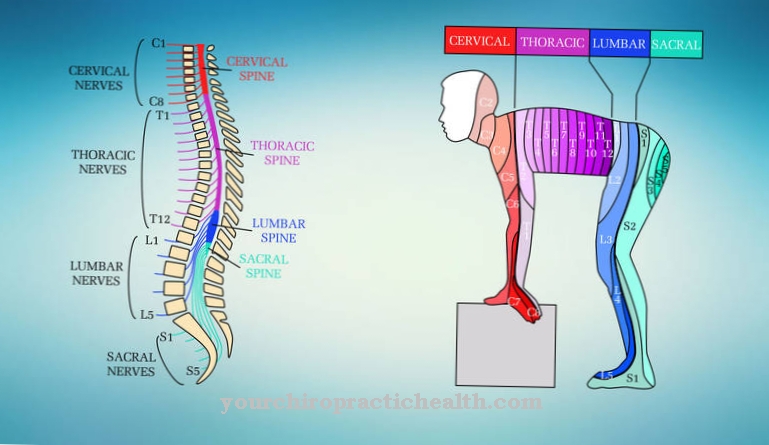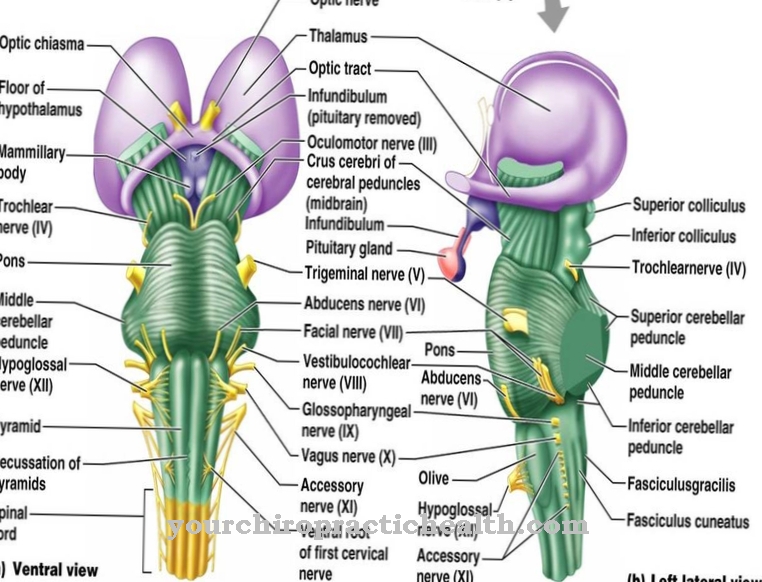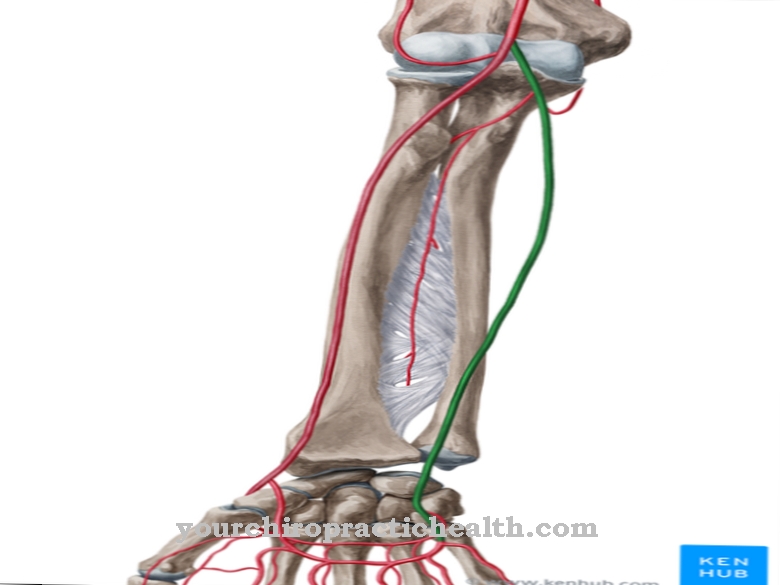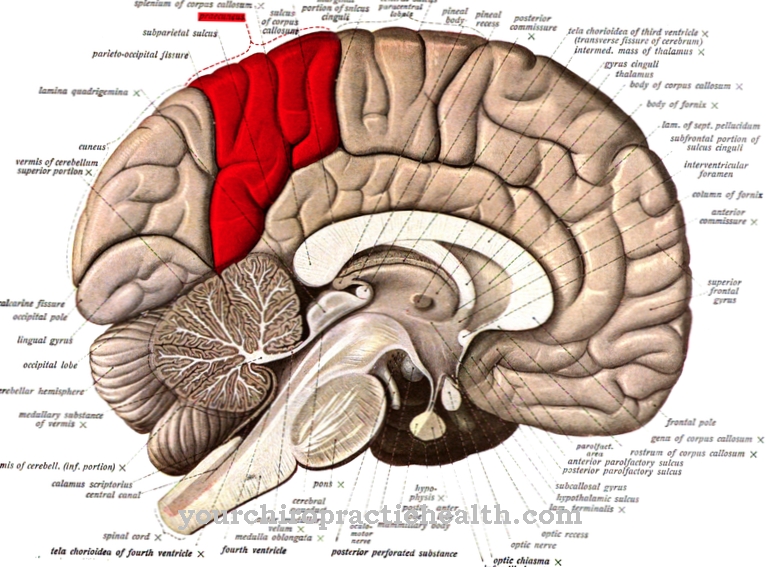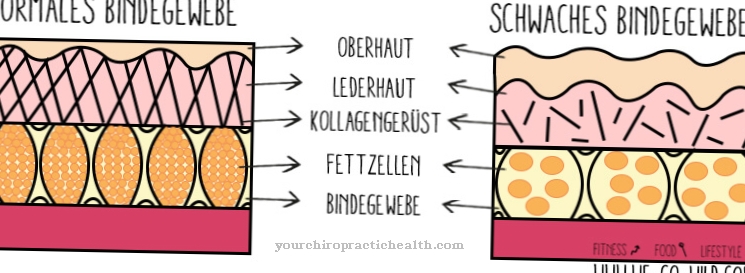Of the Lingual nerve or Tongue nerve innervates the front two-thirds of the tongue and includes both sensory and sensitive fibers. It belongs to the mandibular nerve, which is subordinate to the trigeminal nerve. Lesions can lead to taste disturbances, discomfort when swallowing and physiological speech disorders.
What is the lingual nerve?
The lingual nerve runs through the area of the lower jaw. It represents a branch from the mandibular nerve (Nervus mandibularis), which in turn is a branch of the Nervus trigeminus. The trigeminal nerve is the fifth cranial nerve; neural information from the entire facial area converges in it.
In addition to the mandibular nerve, the trigeminal nerve has two other main branches: the ophthalmic nerve or eye branch and the maxillary nerve or maxillary branch. The lingual nerve innervates the front two thirds of the tongue and receives both sensory-specific (sensory) information from the taste buds and non-specific (sensitive) signals regarding pressure, temperature, touch and pain.
The latter are more than just strong touch stimuli; The human body has its own pain receptors (nocireceptors), which are often free nerve endings. Since the lingual nerve primarily connects the tongue to the nervous system, it is also known as the tongue nerve.
Anatomy & structure
The end of the lingual nerve is in the tongue, under the mucous membrane. From there, the nerve fibers pass under part of the submandibular gland (glandula submandibularis) before continuing between it and one of the tongue muscles (musculus hyoglossus). At this point the lingual nerve is on the side of the tongue.
It then crosses one of the outer muscles of the tongue (styloglossus muscle) and then the upper throat constrictor (superior pharyngeal constrictor muscle), which is one of the muscles of the pharynx. Then the lingual nerve with the back of the lower jaw (ramus mandibulae) on one side and the musculus pterygoideus medialis on the other side leads upwards in the face, whereby it also passes the inner and outer wing muscle (musculus pterygoideus medialis and musculus pterygoideus lateralis) , both of which belong to the masseter muscles. As the mandibular nerve, it continues to the skull. The trigeminal nerve divides into this and two other branches in the cranial cavity.
Function & tasks
The job of the lingual nerve is to transmit nerve signals. Different fibers within the web can be grouped together. The sensory fibers carry electrical impulses that nerve cells produce in response to a sensory stimulus. In this case, it is a question of gustatory or taste stimuli on the tongue.
The sensitive fibers of the lingual nerve must be distinguished from this. They convey information relating to touch, pain and temperature. The sensible fibers make up the majority within the nerve. A person has around 100,000 chemical receptors on the tongue and in the throat that are responsible for the perception of taste. Several of them are grouped together in a taste bud. The saliva helps to loosen water-soluble molecules from the food so that the taste receptors can react to the individual substances.
The molecules either act directly on the ion channels or bind to the receptors, which then open ion channels in the cell membrane. In both cases, the sensory cell is depolarized: an electrical signal is generated. The individual nerve fibers that make up the lingual nerve are combined into bundles. A layer of connective tissue delimits the 1-3 bundles within the nerve. This covering layer, which is rich in collagen, represents the perineurium.
Physiology describes the inside of a fascicle as the endoneurium - it is where the actual nerve fibers are located, through which information in the form of electrical impulses reaches the brain from the tongue.
You can find your medication here
➔ Medicines against loss of appetiteDiseases
Damage to the lingual nerve can result in various sensory disorders of the tongue. Such lesions are possible, for example, as a result of a surgical intervention on the jaw, which can be part of a dental or orthodontic treatment or are used to remove cysts, tumors and other tissue.
A typical example is almond removal. Needle punctures, as are necessary for local anesthesia, can also accidentally hit the lingual nerve: Although muscles, nerves and other structures in the human body basically follow the same course and structure - but in individual cases slight deviations are possible. The exact position of the lingual nerve cannot therefore be assessed with absolute certainty in every case.
Medicine also calls such damage iatrogenic in the context of treatments and examinations. In addition, injuries to the face carry the risk of a lesion on the lingual nerve. Regardless of the exact cause, signal transmission in the nerve can fail completely or be only partially impaired.
Disorders of the gustatory perception are summarized in medicine as dysgeusia. Destroyed nerve fibers that no longer transport stimuli may result in a complete loss of taste in the affected tongue area (ageusia). In hypogeusia, on the other hand, the sensitivity to gustatory stimuli is only reduced. Numbness and perception disorders with regard to temperature, pressure, pain and touch are also possible.
Since the lingual nerve does not innervate the entire surface of the tongue, but only the two front thirds, a lesion on this nerve usually does not lead to an absolute loss of taste. Most of the chemical receptors with which a person perceives the taste stimuli are in the back third of the tongue.
In addition to taste disorders, various other complaints can manifest themselves as a result of a lesion on the lingual nerve: Swallowing disorders and motor difficulties when speaking are also possible.

